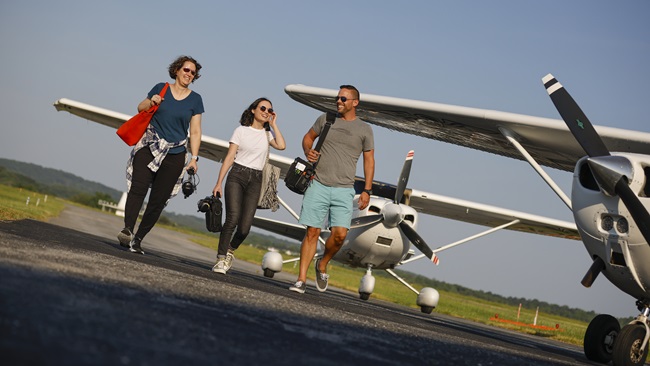Airports dozens of miles away from the big game are preparing for a surge in Super Bowl traffic, and the Super Bowl Host Committee is working with AOPA and the FAA to keep pilots informed of airspace changes, traffic procedures, and flight planning requirements for a broad stretch of airspace.
The committee has posted information for pilots online, and is also working with aviation organizations and FBOs to disseminate details. Sean White, a member of the Super Bowl Host Committee’s Aviation Committee, said thousands of additional flights will converge on 16 airports, including three with temporary Class D airspace established.
“Everybody who’s flying needs to pay attention to this, even if you’re flying several days before the game,” White said.
Airports up to 70 miles away are preparing for the arrival of 1,000 or more GA aircraft, and up to 3,500 flight operations between Feb. 2 and Feb. 5. The FAA on Jan. 11 issued an updated notam covering airspace and security procedure changes including the establishment of temporary control towers at Indianapolis Executive, Eagle Creek Air Park, and Indianapolis Regional airports during Super Bowl week. Additional details, including the establishment of a TFR around Lucas Oil Stadium, will be released later.
The Super Bowl Host Committee has been working with airport and FBO managers to coordinate the arrival and parking of flights. Pilots are asked to note in flight plan remarks their intended parking or drop-off location on the field to facilitate air traffic control coordination and to reduce radio chatter.
Post-Air and Hendricks County-Gordon Graham Field—lack FBOs and other facilities, and are therefore unable to handle visitors.
Some airports have announced temporary landing and parking fee increases, including Monroe County Airport, 54 miles south of the stadium. A $75 daily parking fee and $75 landing fee will be effective there Feb. 2 through 5.
White said the committee has no position on those fees, or any others that may still be announced, adding none of the FBO operators he is working with expect to make a profit.
“They have all invested in significant additional staffing and brought additional resources to bear to accommodate the additional traffic,” White said. “Many are hoping just to break even.”



